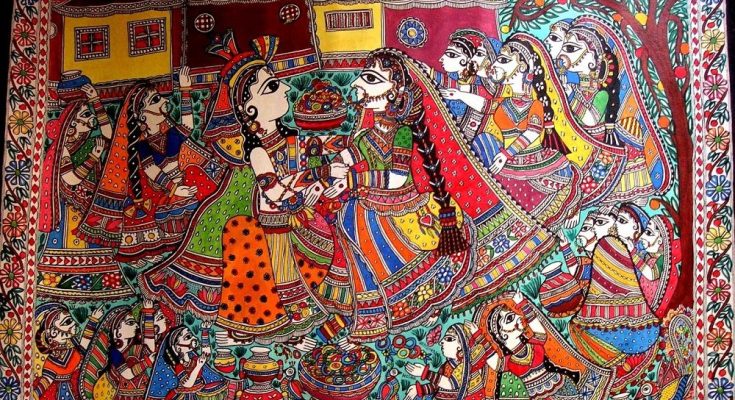As per the professional artists of Madhubani paintings sketch and Lakshmi Tanjore Painting- there are 5 unknown facts that one must be aware of before buying art online. One of the most well-known kinds of traditional Indian art is Madhubani or Mithila paintings. The art, which originated in the Madhubani region of the Indian state of Bihar, is now done by amateur artists all over India, and some contemporary painters have taken inspiration from these vibrant mosaics.
Much has been written about the art form – the fact that it was originally practiced only by women, that no part of the canvas is left blank, that the paintings depict nature, Gods and demi-Gods, that they are ritualistic in nature, and that they still play an important role in festivals and ceremonies such as weddings; all of this is common knowledge. But there are a few elements about Madhubani that most people aren’t aware of. Here are a few of these little-known facts about the paintings:
How did the world learn about Madhubani art?
Surprisingly, Madhubani was introduced to the Indians and the rest of the globe by an Englishman. According to legend, a tremendous earthquake struck the state of Bihar in 1934. William Archer, a British official, was surveying the damage caused by the earthquake in the Madhubani district when he came across artwork on the internal walls of crumbling homes. He shot some of the earliest black-and-white photographs of the paintings.
In 1949, he published an article on the paintings in the Indian art journal Marg, which brought the paintings to the attention of the general audience. Archer went on to become the South Asia Curator at the Victoria and Albert Museum in London.
The paper masterpieces will last a lifetime.
Clients are frequently hesitant to buy paintings on paper. After all, canvas outlasts paper when it comes to durability. The creations created by Madhubani artisans on specific handmade paper, on the other hand, are made to last. To begin, the paper is standardized handmade paper in terms of quality and gauge. Add in the fact that the painters treat the paper with neem extract, which not only gives it a unique stained background color but also protects it from insects and other pests. A weak solution of cow dung is sometimes used in addition. This is why, despite the fact that Madhubani paintings are done on handmade paper, they are resistant to silverfish, termites, and other pests.
Feng Shui is the Chinese art of balancing energy.
Few people understand it, but the Madhubani paintings are filled with symbols and tropes that have a deep connection to Feng Shui. Flowers, particularly the lotus, have a significant significance in Madhubani lore, and even in Feng Shui, where flowers are thought to instill a lovely spirit and bring good luck and fortune. Birds, which are prominent in Madhubani paintings, particularly those associated with the tree of life, are associated with divinity, knowledge, and spirituality in Feng Shui. In Madhubani art, the fish represents prosperity and fertility and is thought to bring good luck in Feng Shui. Another prominent emblem is the turtle or tortoise, which denotes vitality and good fortune. Installing a Madhubani painting in your home, in this sense, will bring with it tremendous benefits.
Wrap up:
Buy Indian paintings online from websites like Indian Art ideas and get great Lakshmi Tanjore painting and Madhubani paintings sketches. While you get to learn about the history behind the art of Madhubani- grab the best deals for your home and office decore too.



